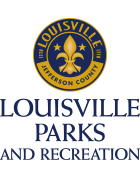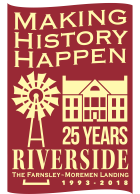African Americans at Riverside
1830s -1840s
Court documents filed in the settlement of the estate of Gabriel Farnsley, the first owner and occupant of what is now known as the Farnsley-Moremen House, reveal the harsh reality of the lives of enslaved African Americans. On February 25, 1850, thirteen enslaved people previously owned by the now deceased Gabriel Farnsley were sold at public auction on the steps of the courthouse in Louisville along with all of Farnsley’s other “property.” The Decree of Sale names each enslaved person and their age: “Tom about 55, Peter 19, Henry 13, Jim 7, Anna 40, Eliza 21, Emily 17, Milly 10, Mary Ann 8, Martha [illegible] years old, Josephine 18 and Mary Ann (child of Emily) about 8 months old.” The Record of Sale lists the sale price of each individual. These thirteen individuals, likely representing a couple of families, were sold to eight different new owners.
Like Farnsley, the Moremen family owned slaves.
Records from the year 1860 show the family owned 23 enslaved people, a very significant number for Kentucky. For comparison, the largest slaveholder in Jefferson County, Kentucky in that same year owned 56 slaves.
Slaves in Kentucky were not freed until the Thirteenth Amendment was ratified in 1865.
At present, very little is known about what happened to the enslaved people owned by the Moremen family after the Civil War. Bits and pieces of evidence, including oral history tradition, suggest that some African Americans continued to live and work on the Riverside property following the abolition of slavery–some may have been former slaves.
Archaeological research begun in 2000 on a former slave house promise to be one of the richest sources of additional information regarding the lives of the African Americans who lived and worked at Riverside before 1865. The continuation of this research is a priority for Riverside.





